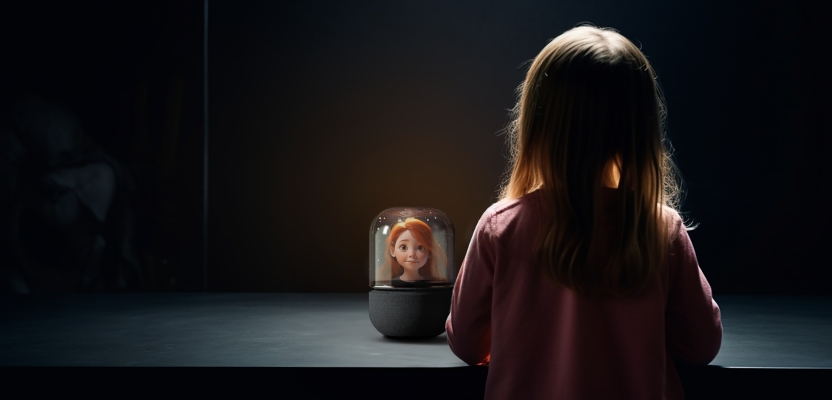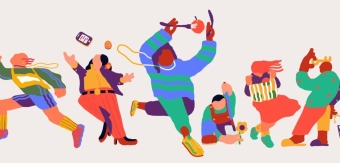AI is fast becoming a part of our everyday lives, making life easier in both our personal and professional lives. But what does the future AI personal assistant look like? With its new concept, Swift Creatives sets out what could be the next generation of this technology.
Designed to transform the way we interact with technology, this holographic AI friend, housed in a dedicated device, adapts to each user's needs by transforming its appearance and personality so no two avatars are the same. Swift has created each user’s persona to be bespoke only for them, growing with them and therefore integrating the role they play further into their lives.
Moving beyond information sharing, this innovation in technology has been created to act more like a companion than a smart speaker. Whether it’s a younger child who needs help with their homework, a teenager who wants someone to share their music taste with or an elderly person wanting someone to talk to, this innovative AI powered device has been designed to fully integrate as a new best friend, a personal chef, a tutor or a yoga instructor.
To learn more, we spoke to Carsten Eriksen, CEO & Co-Founder of international design and innovation studio Swift Creatives.
What was the brief?
The concept of the AI Assistant (a bespoke and versatile holographic companion) was an internal design initiative, the product of a process whereby we take time out of client work to explore next generation technologies and the role design plays in integrating them into daily lives.
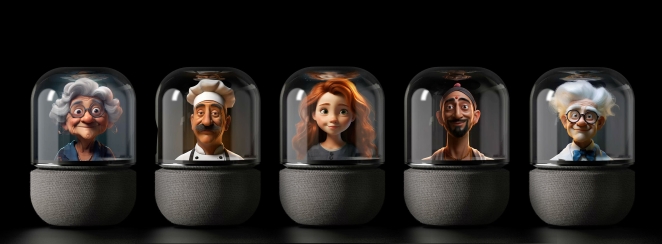
Motivated by a growing curiosity in AI, we wanted to look beyond the existing products on the market to see what the future of AI personal assistants would look like.Our aim was to create a concept that brings AI technology closer to the user, integrating the two parties more intuitively, and creating something approachable and fun to use.
How did the initial pitch/brainstorming phase go?
During the initial pitch and brainstorming phase our focus was on adhering to our design dogma: making complex and technical products less intimidating and more appealing and intuitive for users. Recognizing the potentially threatening nature of AI technology, and consumers nervousness about its role in their lives, we wanted to create a product that would let users fully reap the benefits of AI technology, but in a way that is fun, approachable and relatable.
After many brainstorms and radical ideas, the holographic personal AI Assistant was born. Designed to be more of a helpful friend than functional assistant, we designed the avatars to adapt to each user's needs by transforming their appearances and personalities, so no two avatars are the same. We also created each user’s persona to be bespoke to them, growing with them and integrating more seamlessly into their lives as the relationship builds.
Another important idea that arose throughout the brainstorm process was to ensure the avatars were designed with enough of a cartoonesque appearance as possible, moving away from real-life avatars and away from negative connotations with deep fakes. This has helped to ensure all the personas have a friendly look and sound, creating a true companion-like experience.
What was the process behind ideating the concept?
The ideation process for the personalized AI Assistant concept was a slight shift away from our typical design and concept projects. Rather than traditional design, the focus shifted towards facilitating the AI to create various adaptable personas, letting the technology determine their appearance, voice, and communication style.

This unique approach involved iterative cycles, combining design thinking with hands-on exploration and testing through AI prototyping.
What was the production process like?
As this is still at concept stage, the production process for the AI Assistant mainly involved internal design work. Prototyping also played a pivotal role in our design process to ensure the concept could become a reality.
What was the biggest challenge during production? How did you overcome it?
Our biggest challenge in creating the holographic, personalized, AI Assistant concept was fulfilling our idea of enabling the user to take their AI companion with them, wherever they went, for true assistance and companionship. We needed to design, create and implement an 'On the Go' feature.
A specific challenge here was enabling the AI-generated assistant to appear naturally in selfies and vacation pictures. Through trial and error we successfully realized the idea. As AI technology continues to evolve rapidly, this is a feature we would particularly expect to evolve.
What kit/tools/software were used to create the project?
For the ID design we use Rhino and KeyShot.
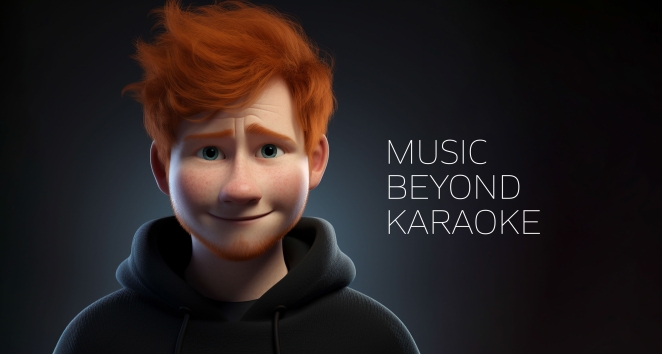
For the digital AI Assistant we used various AI software applications, including but not limited to:
- AI text generators,
- AI Images generators,
- AI text-to-voice generators
- Digital Humans Video Generators.
What is one funny or notable thing that happened during production?
During the development, a funny moment occurred when we created Witty Willy, the comedian persona. It turns out that AI has a peculiar sense of humor, which can venture into the ‘bad joke’ realm. Who knew?
What’s the main message of this project and why does it matter?
In the world of AI-enabled hardware, technological prowess alone will never be enough to win over users. Without thoughtful design, AI will struggle to find its place in our everyday lives.
We need a shift towards designing AI-enabled hardware that prioritizes user experience and emotional connection. This is at the heart of all our work at Swift Creatives and what we aim for our concepts to achieve.
How long did it take from inception to delivery?
The design process for the personalized AI assistant spanned 10 weeks, from project kick-off to finalization - we often work at speed for clients so we were keen to do the same for our own concept.
What do you hope it achieves for the brand?
For this internal project, the internal primary objective for Swift Creatives was to learn more about the capabilities and limitations of AI. Understanding the pain points not only allows us to create future facing concepts, such as this, but enables us to transfer that knowledge into our client work too.
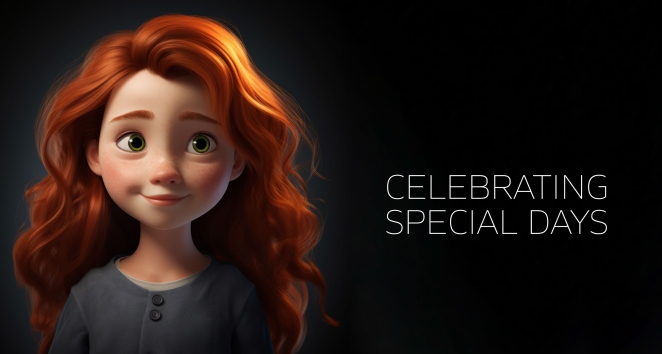
It is also a really fun way of remaining true to our core passion, showcasing the critical role design plays in adapting the latest technology into useful, relatable, features and products that seamlessly blend into people's daily lives.
Credit list for the work?
I’d like to credit the colourful cast that was a part of this project, including:
Chef Giovanni – the Italian Culinary Maestro.
Yogi Anupama – the Yoga Master.
Beatrice – the comforting companion for children's bedtime.
Witty Willy – the Comedic Companion.
AI SHEERAN – for the Music Beyond Karaoke feature
And Lily for Celebrating Special Days.
